Is hotel art a waste of time?
- Published
Does using art to sell hotels make good business sense?
If you visit the Emperor Qianmen hotel, near the Forbidden City in Beijing, be sure to bring an umbrella - otherwise you may get drenched. That's because it sometimes rains inside the lobby.
This is not due to a leaking roof. The "rain" comes from an installation by the Canadian artist Dan Euser, whose other pieces at the Emperor include an astonishingly realistic "waterfall" in the hotel's spa.
The Emperor is a "water hotel", explains the Chinese artist Bingyi, another member of the team behind the establishment's design. It is built on the site of an old bath house, and it was this, Bingyi adds, that gave the hotel's architect, Adam Sokol, the idea for an aquatic theme for the project.
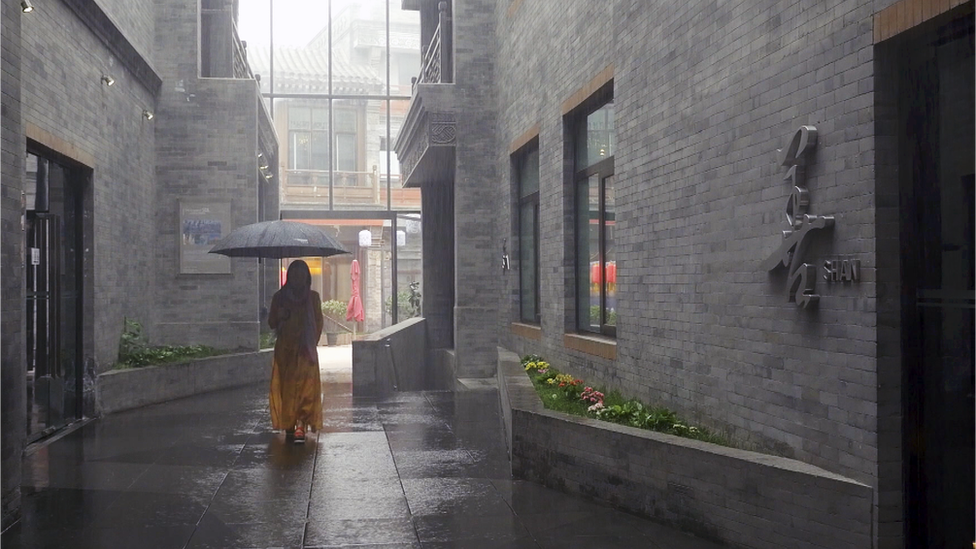
At the Emperor Hotel in Beijing an art installation creates rain inside the lobby
Art can be found almost everywhere at the Emperor. Bingyi's work on display includes Cave in Heaven, a vast ink and paper mural covering 400 square metres, over the entire walls of a large space.
Bingyi believes that China today is a fruitful place for collaborations between artists and hotels, like the one at the Emperor.
"Cultural significance is very important to Chinese.
"We take the greatest pride in our cultural heritage… we write calligraphy, we write poetry, we have this kind of particular passion to turn every little craft into this magnificent habit of living, and we're just obsessed with it," she says.
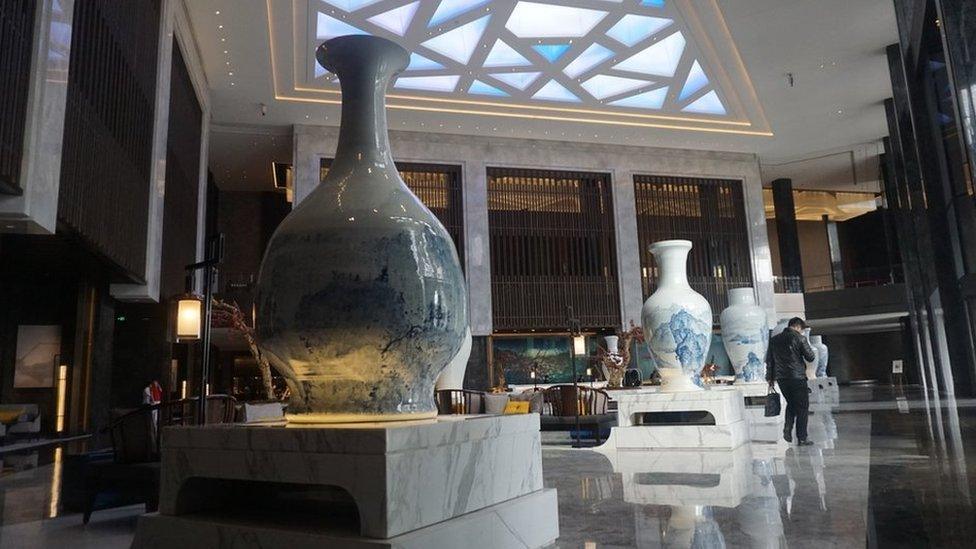
The lobby of luxury hotel Nuo displays huge vases made from Chinese porcelain
The Emperor is far from the only hotel in Beijing to place an emphasis on the role of art.
Enter the lobby of the Nuo, a new luxury hotel, and you could be forgiven for thinking you had stepped into a museum. Throughout the vast space a series of giant vases are arrayed, each one more than two metres tall. They were made in Jingdezhen, home of fine Chinese porcelain for thousands of years.
The blue and white vases echo the Ming Dynasty theme that pervades much of the hotel's design.
But they are only the beginning, says Adrian Rudin, the hotel's general manager:
"Wherever you go, from the lobby lounge to the bar, there are different art pieces, some sculptures, some paintings, from different young and upcoming artists." He estimates the value of artworks at the hotel at around $50m [£40m; 46m euros]."
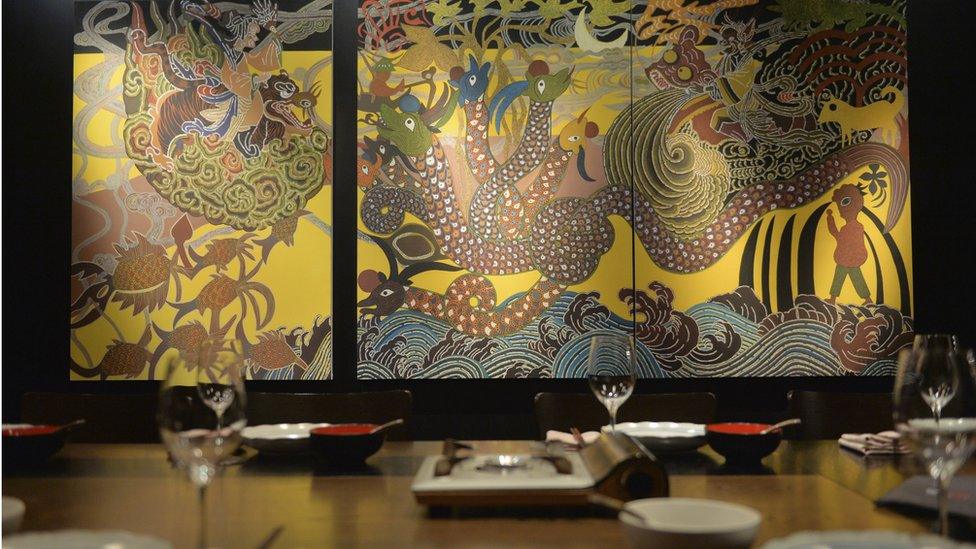
Beijing hotel managers say that art is one way for luxury lodgings to set themselves apart from rivals
Why so much - or indeed, any - art?
"It is a selling point in terms of consumers who are interested in fine art and culture," says Mr Rudin. But, he adds, there are other reasons too.
The hotel is the starting point of a new venture with the aim of creating an "international luxury Chinese brand" Mr Rudin explains.
In this context, he believes that art has a key role to play in helping the new enterprise to find a distinctive voice.
Other luxury groups also see merit in this kind of approach.
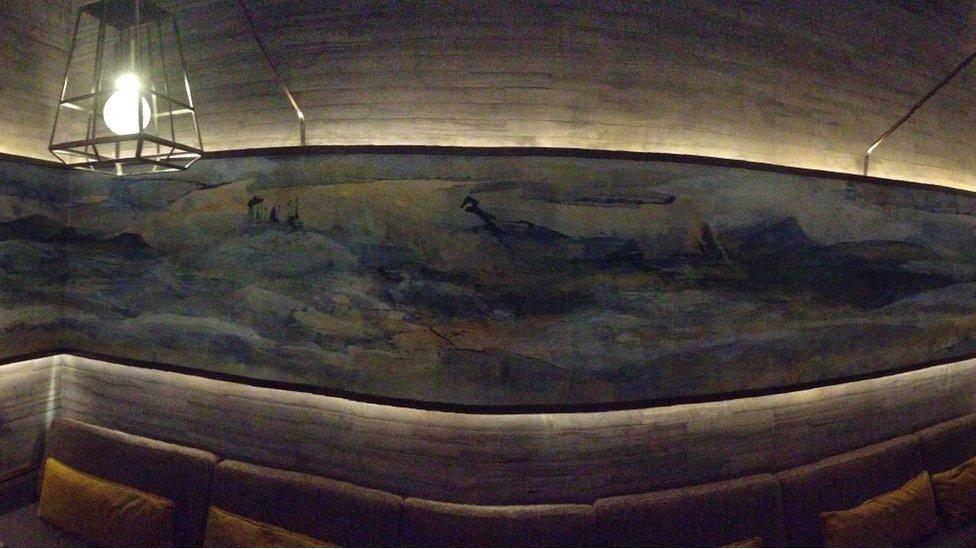
The Rosewood Hotel says its aim is to create a space that feels like a "luxury private home"
One of the troubles of the modern international hotel scene, says Marc Brugger, is that it is an "ocean of sameness". Mr Brugger is managing director of the Rosewood hotel, another recently-launched luxury property in Beijing.
He believes that art can play a valuable role for luxury lodgings seeking to find new ways to set themselves apart. However, for this to be successful, time and careful thought are required.
When the hotel was being conceived, Mr Brugger recalls, the idea of creating somewhere that felt like a "luxury private home" emerged. In such an establishment, art would have its natural place.
This meant departing from the usual hotel design process.
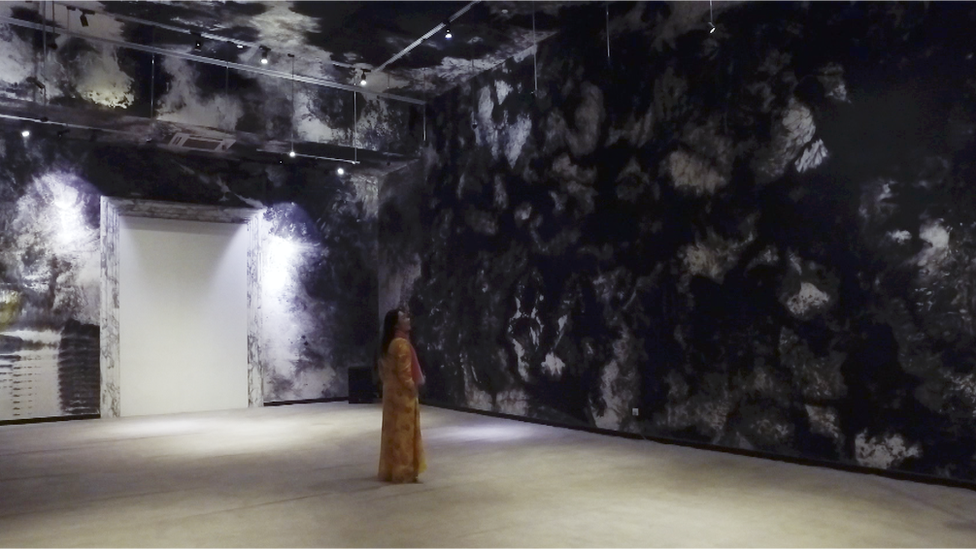
Chinese artist Bingyi's work for the Emperor Hotel includes Cave in Heaven, a vast ink and paper mural covering 400 square metres
According to Mr Brugger, what often happens is that plans will be drawn up and some blank spaces will be left for "art" to be added later.
"That method is much faster" he says, than the "holistic" approach taken in designing the Rosewood, where most of the art was specially commissioned and integrated into the design.
The design team searched for up-and-coming artists who could create work that would fit well into the scheme, rather than existing pieces from established names which might overpower or destabilise the overall look.
It took a long time to find the right artists, says Mr Brugger, but he feels that the results were well worth it.
'Re-imagining luxury'
Do collaborations between artists and hotels like these make good commercial and creative sense? Up to a point, say experts.
"There is a rationale for doing this, in a crowded hotel market" says Peter York, who has been an adviser to many large luxury enterprises. Companies need to find ways "to stand out from the ordinariness of luxury now, because luxury has become very ordinary".
But he says there can be risks, both for the hotels, and more particularly for the artists: "It's a sensitive balance between what you do to make a lot of money, and to pump your brand, and the verdict of history - and you don't want the verdict of history to come in too fast", he warns.
Still, Chinese hotel operators, and the artists they work with, remain optimistic about the future and the benefits that can flow from working together.
"We're really re-imagining what is luxury" says Bingyi. "We just all need to be reminded every single day how beautiful things can be."